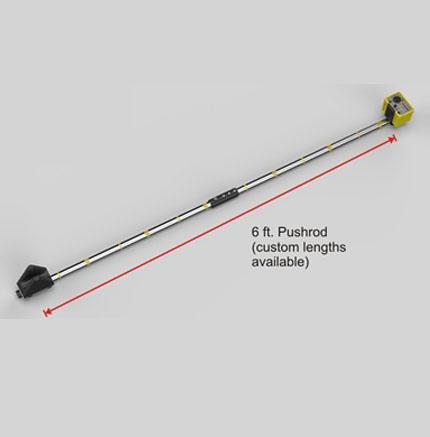Accurately measure floating sludge blankets with infrared sensors
The
Raven DAF-SID-10300 Sludge Interface Detector is a portable handheld
instrument that accurately determines the sludge blanket solid/liquid
interface depth in dissolved air floatation tanks.
- Infrared sensor probe
- Audio and visual LED indicators visible in direct sunlight
- Sensitivity adjustment
- Low battery indicator
- IP 67 - Field rugged and weather resistant
It's equipped with a anodized aluminum pushrod with incremented depth
markers and infrared sensor probe style V40, part number SID-10303-n where n is the length of the pushrod. Powered by six AA alkaline batteries.Measuring the thickness of the floating sludge blanket is simple.
As the probe is lowered into the tank and the solid/liquid interface
is engaged, the meter lightbar LED sements begin to illuminate and the
horn tone sounds and changes as the solids density increases.
To
measure the thickness of the floating sludge blanket, push the sensor
probe into the sludge and notice the illumination of the red LED's as
the gap in the probe is fully blocked with sludge. Keep pushing lower
until the LED's begin to go out. Check to see how deep the sensor is by
looking at the markers on the Pushrod. It's that easy.
Point
of Interest - at the sludge blanket interface with the fluid below, try
increasing sensitivity to determine how much of a ragged edge there is
below the most dense part of the blanket. At low sensitivity the LED's
will go from all to none very quickly over a short lowering distance
below the blanket. At high sensitivity you might find that there is
quite a bit of travel below the most dense part of the interface before
all the LED's go out.

